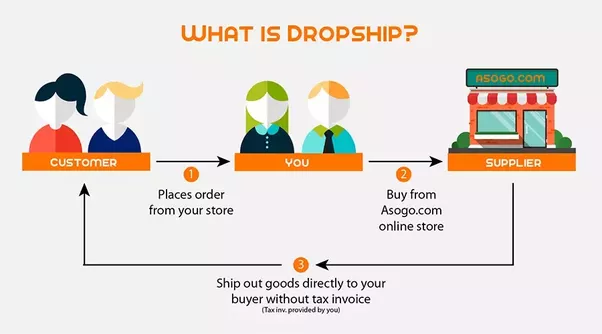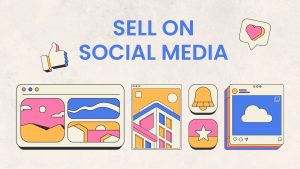If you have been thinking about starting your online business and are confused about dropshipping, this post is definitely for you.
We work with several Shopify stores, and we know that they are passionate about getting the best of products to their target markets – no matter what it takes for them to get the products in place to start with.
But if you’re not producing your products or merchandise, you need to reach out to the best suppliers to curate a product range that your customers would love. That’s where most people stop dreaming about starting their own online business.
But that is exactly where dropshipping comes in.
What is dropshipping?
Dropshipping is a retail fulfillment method where the Shopify store is not required to keep the products it sells in stock. Instead of having a warehouse to store the products it sells, it can simply purchase the item from a third party, then ship it to the customer directly.

So basically, you get to earn a small profit on the products you choose to sell on your Shopify store without taking the risk of keeping them in stock before driving in customers.
Pretty simple, right?
Why should you experiment with dropshipping?
Dropshipping has endless benefits for those wanting to set up an online store on Shopify. Here are some of them:
1. No overhead costs
You don’t have to purchase an inventory. This cuts down the cost of renting out or buying a warehouse to keep a stock of products. You need to invest in creating a Shopify store to sell your products.
2. Lower business risk
Since there is little to no inventory pressure, you don’t lose much even if your products don’t sell for some reason.
3. Location independent
You can run a successful Shopify store with dropshipping from anywhere with no office, no warehouse, and no employees required. All you need are a laptop and, of course, a stable internet connection.
4. Wider product range
You can find products in absolutely every category or niche. Once you decide what to sell, you can choose products from thousands of suppliers and add them to your Shopify store.
5. More profits
You don’t just get to choose the products you want to add to your Shopify store; you also get to decide the price you want to sell them at. This allows you to define your margin while setting up the shop.
6. No shipment hassle
When an order is placed on your dropship Shopify store, the supplier is the one who has to take care of handling the product and delivering it. So the shipment goes directly from the supplier to the customer. You profit from the sale and focus more on developing your Shopify store.
How much revenue and profit can you earn from dropshipping?
Typically, you can make margins from 15% to 45% by using drop shipping for your Shopify store. However, the profit margins also depend on what you decide to sell. For instance, if you’re selling consumer durables or luxury items like jewelry, electronics, and more, you can quickly draw in a profit of 100%.
Simply put, it is all about finding the right niche and a supplier for your products before entering the market.

Although it might take time to reach your target market, drawing in a decent amount of traffic to your Shopify store might require consistent efforts like using social media posts, advertising, or even search ads. But once you take off, dropshipping can become a revenue-generating machine for your business.
There are several success stories around dropshipping. But you can read our favorite one on how much money Johnny made from dropshipping.
Who is dropshipping for?
It’s for anyone just starting their business online. The low-risk and flexible dropshipping model makes it easier for you to test the waters before getting into a business model for good.
But where do you begin?
Dropshipping can be overwhelming for beginners. There is so much that you can do and so many products you can choose from that you might go off track while starting up. From selecting the right supplier to branding, keeping minor details in mind is essential.
And that’s why you need to equip yourself with the right tools to make your dropshipping experiment successful.
Must-haves to get started with dropshipping and get more sales
1. Competitor analysis
Before you even think about starting your own Shopify store using dropshipping, the very first step you should take is to analyze your competition. Irrespective of your chosen niche, you should always look at who is targeting a similar market as yours, what they have won so far, and identify opportunities. This can also help you decide on the products you want to sell in your store.
Recommended tools: SEMrush, Talkwalker
2. Search Engine Optimization (SEO)
When so many drop shipping online stores are launched worldwide, you must immediately optimize your efforts. Don’t just rely on paid marketing tactics to drive growth. SEO is crucial to online stores, so once you decide your store’s niche, the products you want to sell, the target market you want to sell in, and other demographics, list down the keywords you will need to optimize your product listings for.
Recommended tool: Google Keyword Planner
3. eCommerce platform
To start your online store, it’s better to choose an eCommerce platform than to develop it from scratch. This will enable you to set up shop in no time. A suitable medium will allow you to create your theme, customize product pages, list down as many products as you want to, and simplify it for customers to shop from you
Recommended tool: Shopify
4. All-in-one dropshipping
To decide how to bring more products to your store, ideally, you should choose a dropshipping app that integrates easily with your online store. It should enable you to choose from thousands of products from various suppliers and handle the fulfillment and shipping of orders.
Recommended tools: Dropwow, Oberlo
5. eCommerce platform
Consumers spend 90% of their time on smartphones, almost all of which is spent using mobile apps. The eCommerce industry has seen an exponential rise in the number of consumers who choose to shop from mobile devices. It would be best if you prepared your online store to cater to mobile consumers. And the best way to do it is to get your own Shopify mobile app for iOS and Android devices.
Recommended tool: Plobal Apps
6. Graphic maker
You will need some eye-pleasing graphics to customize your online store and start marketing products. Since we’re not good at creating graphics ourselves, we don’t expect you to be an ace, and even if you are, you can’t spend all your hours on design. That’s why you need to have some easy-to-make graphics.
Recommended tool(s): Canva, Piktochart
Ps. You can also choose free stock images from excellent sites like Pixabay, Pexels, and Unsplash.
7. Social media scheduler
Once your online store and mobile app are up, it is time to start getting users to your store. Leveraging social media is the best channel to drive more attention toward your product. It might seem impossible to manage social media when you’re just starting. That’s why you need to choose a social media scheduler.
Recommended tools: Buffer, Hootsuite
8. Loyalty programs
When you’re making so many efforts – social media and advertisements- to attract more people to your store, engaging them from the first visit is essential. Reward programs are a smart way to get new customers more involved with your store. This could include small profitable actions for you, like making a purchase to earn points they can redeem in the following buy, sharing your products to earn credits, and others.
Recommended tool: Smile.io
9. Marketing automation
Running an online store comes with one of the biggest challenges – having to stay at the top of your customers’ minds and simultaneously ensure that nobody else takes away that attention from you. That’s where intelligent marketing automation comes into play. It lets you personalize your customer’s journey right from their first store visit and keep them engaged with regular communication across multiple touchpoints like email, SMS, etc.
Recommended tool: Omnisend
10. Analytics
While most of the tools we listed offer in-depth analytics, it is good to have additional data on hand. It will help you understand what products you should sell more on your store, which you can remove from your listing, what your customers are interested in, which channel works best for you for marketing, and more. But it will help you decide if dropshipping works for you!
Recommend tool: Google Analytics
Getting started
Dropshipping is the latest trend in eCommerce. While it’s a low-risk model that you can experiment with at any given point, it is also essential to list your short- and long-term goals.
Right from the brand you want to create in the digital space to the products you want to add in the future, the market you’d like to sell your products in, etc. It’s almost like strategizing for a regular business you have wanted to run – of course, it is easier with intelligent tools!
Have you tried dropshipping yet?
We’d love to hear about your successes and failures with the new business model!






Share Your Views!